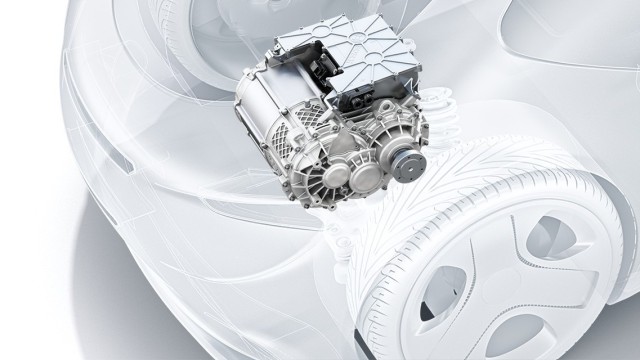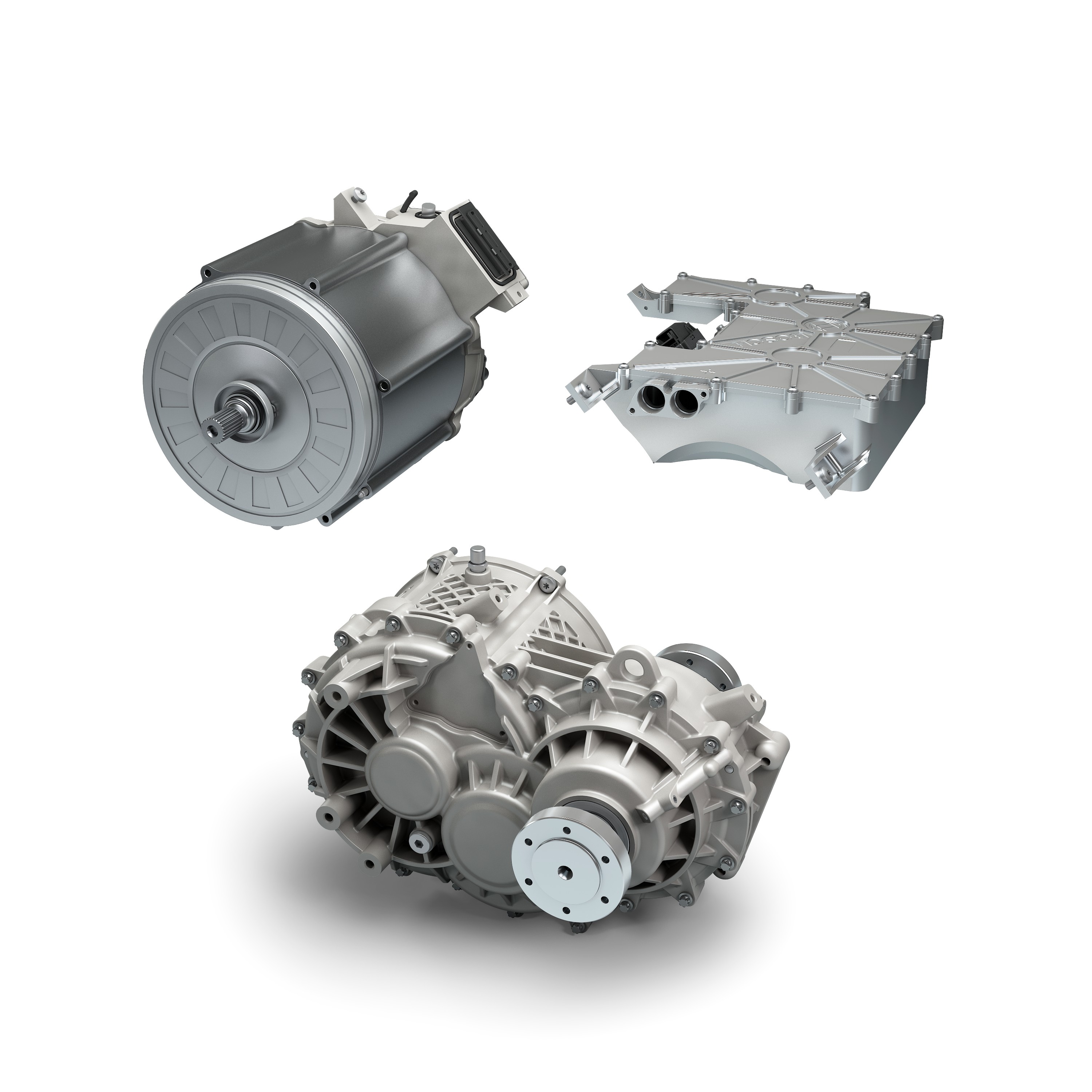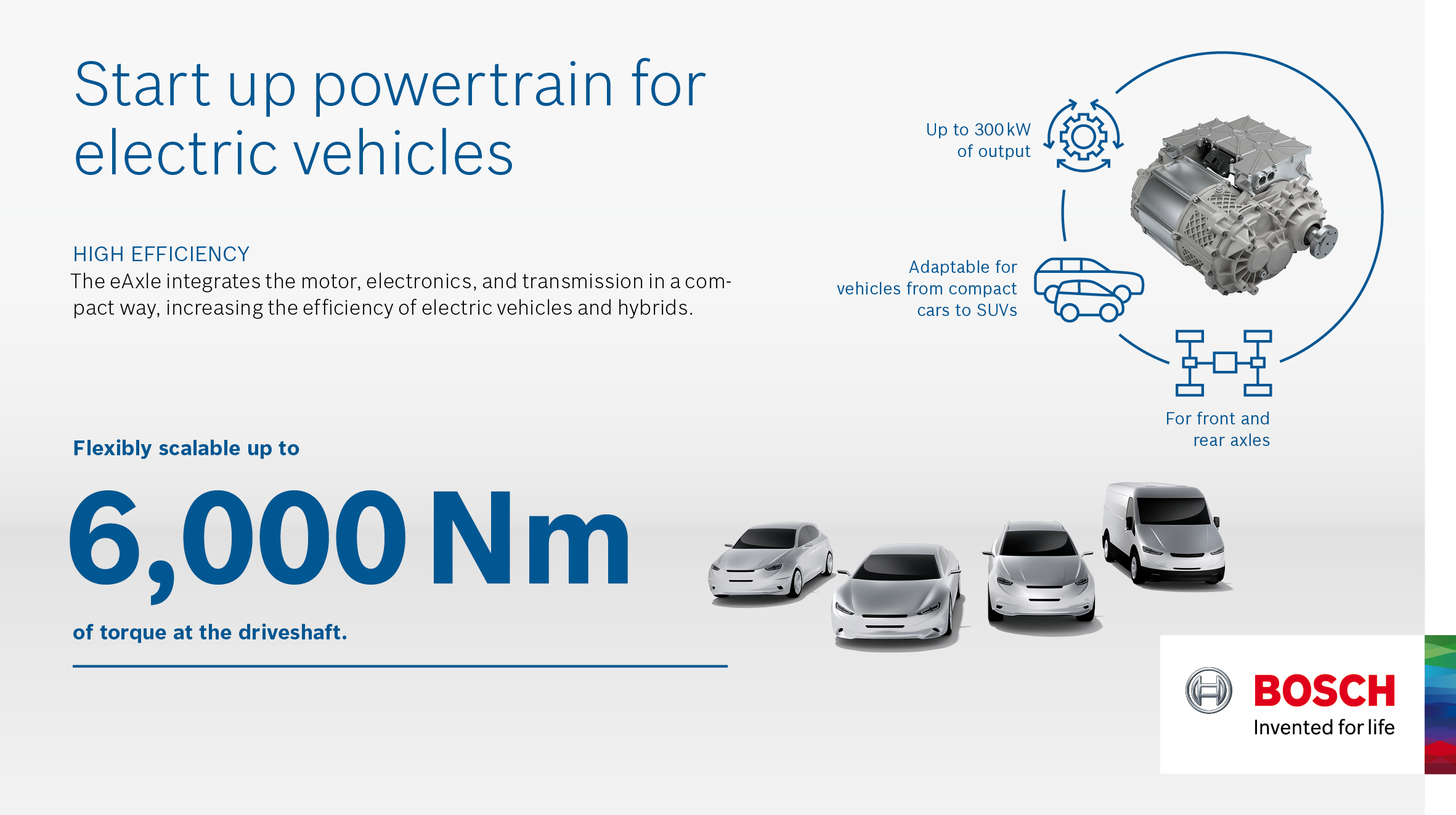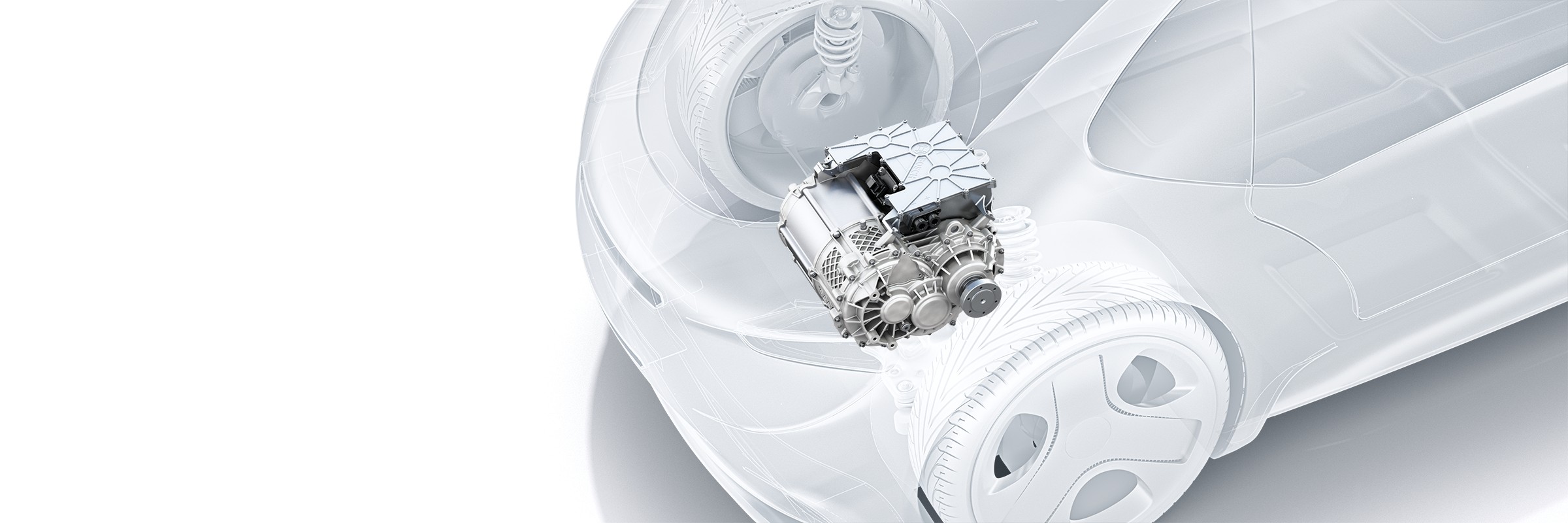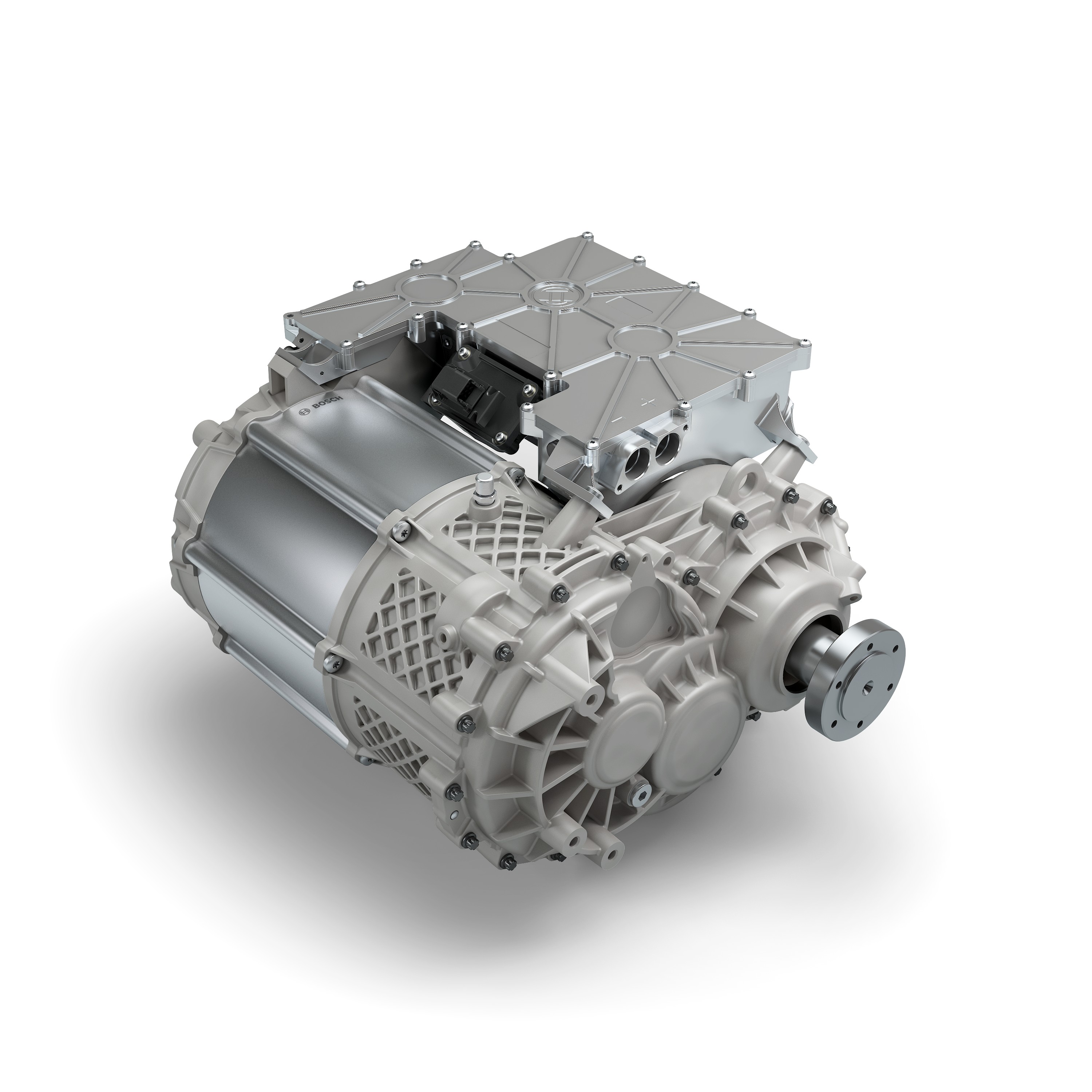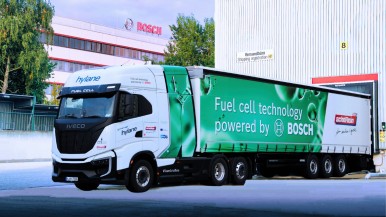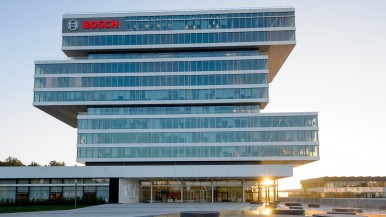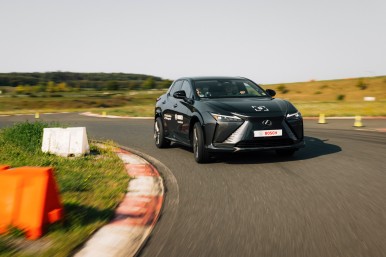Gerlingen, Germany – It’s now common knowledge that a more powerful battery will increase an electric car’s range. But can a new powertrain have a comparable impact? In the case of the Bosch electric axle drive, or e-axle, the answer is a definite yes. What’s so special about it is that Bosch has combined three powertrain components into one unit. The motor, power electronics, and transmission form one compact unit that directly drives the car’s axle. This makes the powertrain not only far more efficient, but more affordable as well. “With its e-axle, Bosch is applying the all-in-one principle to the powertrain,” says Dr. Rolf Bulander, member of the board of management of Robert Bosch GmbH and chairman of the Mobility Solutions business sector. It is precisely for this reason that the new powertrain is a potentially huge business opportunity for Bosch. The components are very flexible, which means the e-axle can be installed in hybrids and electric cars, compact cars, SUVs, and even light trucks – a huge market.
The Bosch innovations on show at the IAA 2017
EXPERIENCE BOSCH AT THE IAA 2017 in Frankfurt: Bosch believes the mobility of the future will be accident-free, emissions-free, and stress-free. On a technological level, Bosch wants to achieve the objectives of zero accidents, zero emissions, and zero stress through automation, electrification, and connectivity. At the IAA 2017, Bosch will be presenting its latest solutions in each of these three spheres – solutions that make driving safer and more efficient, and turn cars into a third living environment.
BOSCH PRESS CONFERENCE: From 13:15 to 13:40 local time on Tuesday, September 12, 2017, with Dr. Volkmar Denner, chairman of the board of management of Robert Bosch GmbH and Dr. Rolf Bulander, chairman of the Mobility Solutions business sector, at the Bosch booth A03 in Hall 8.
FOLLOW the Bosch IAA 2017 highlights at www.bosch-iaa.de and on Twitter: #BoschIAA
Mobility is the largest Bosch Group business sector. It generated sales of 55.8 billion euros in 2024, and thus contributed around 62 percent of total sales. This makes the Bosch Group one of the leading mobility suppliers. Bosch Mobility pursues a vision of mobility that is safe, sustainable, and exciting. For its customers, the outcome is integrated mobility solutions. The business sector’s main areas of activity are electrification, software and services, semiconductors and sensors, vehicle computers, advanced driver assistance systems, systems for vehicle dynamics control, repair-shop concepts, as well as technology and services for the automotive aftermarket and fleets. Bosch is synonymous with important automotive innovations, such as electronic engine management, the ESP anti-skid system, and common-rail diesel technology.
The Bosch Group is a leading global supplier of technology and services. It employs roughly 418,000 associates worldwide (as of December 31, 2024). The company generated sales of 90.3 billion euros in 2024. Its operations are divided into four business sectors: Mobility, Industrial Technology, Consumer Goods, and Energy and Building Technology. With its business activities, the company aims to use technology to help shape universal trends such as automation, electrification, digitalization, connectivity, and an orientation to sustainability. In this context, Bosch’s broad diversification across regions and industries strengthens its innovativeness and robustness. Bosch uses its proven expertise in sensor technology, software, and services to offer customers cross-domain solutions from a single source. It also applies its expertise in connectivity and artificial intelligence in order to develop and manufacture user-friendly, sustainable products. With technology that is “Invented for life,” Bosch wants to help improve quality of life and conserve natural resources. The Bosch Group comprises Robert Bosch GmbH and its roughly 490 subsidiary and regional companies in over 60 countries. Including sales and service partners, Bosch’s global manufacturing, engineering, and sales network covers nearly every country in the world. Bosch’s innovative strength is key to the company’s further development. At 136 locations across the globe, Bosch employs some 87,000 associates in research and development.
Additional information is available online at www.bosch.com, www.bosch-press.com.
